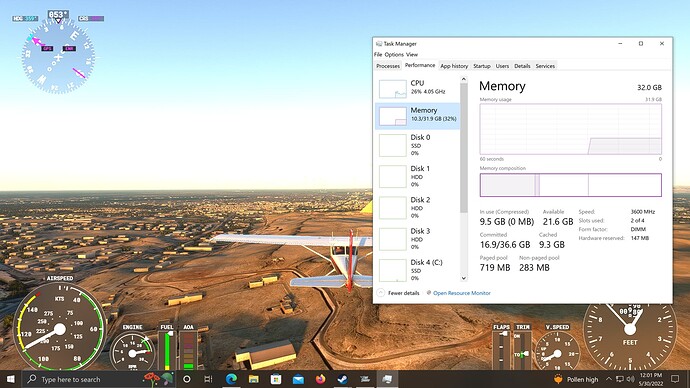i would say its doubtfull more ram would help much in your instance (or frankly with the game in general unless you had really slow ram and also used multiple apps together, like streaming and discord at the same time)
ram is a temporary state and its dynamic - meaning the more you have the more the system will ‘try’ to use - the reason yours isnt using much is your ram is so fast it simply doesnt need to
with the high speed ram you have i would expect the mb thru-put or some other part to bottleneck Long before ram became any real issue on your system - all it has to do is ‘swap’ data fast enough to keep up with say the gpu and/or cpu in this case
EDIT: (just noticed you stated an hdd for cache? not a great idea, cahe is there to ‘speed’ up delivery so is just as important as any part of the game)
if any part of the game is on hdd, that would be your first upgrade imo, get nvme if possible but at least an internal ssd drive for everything is best



